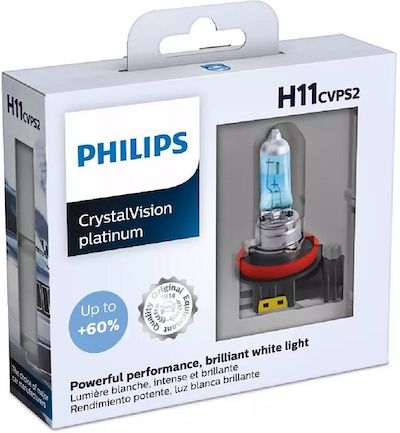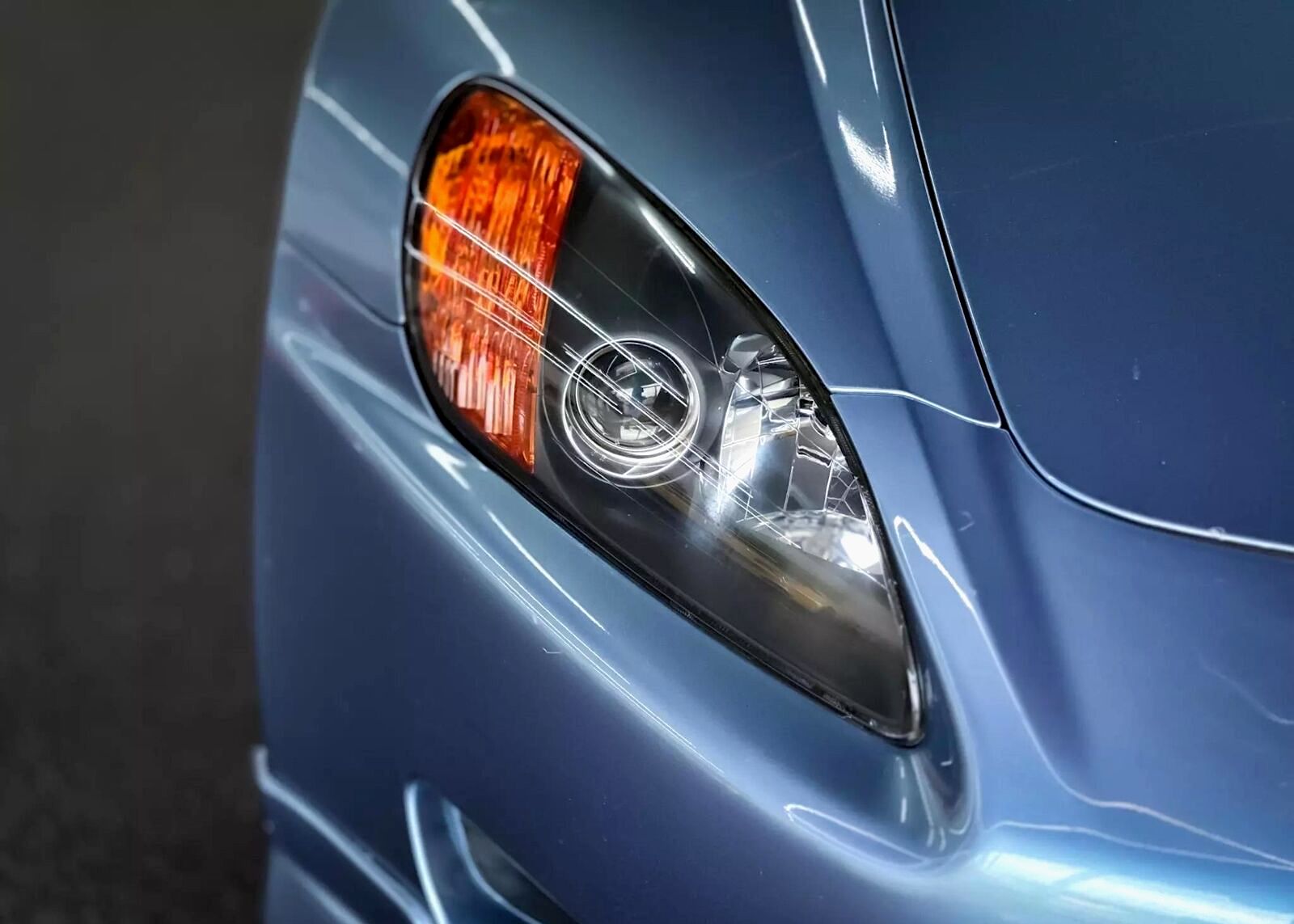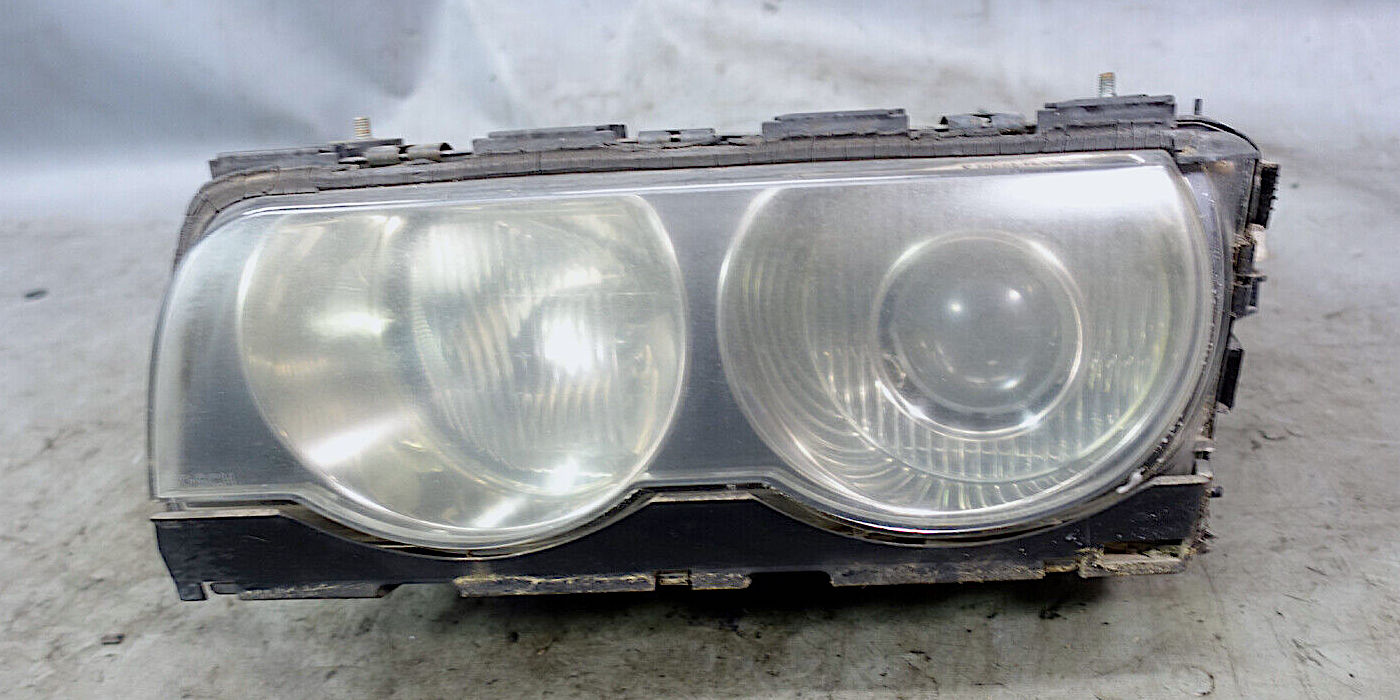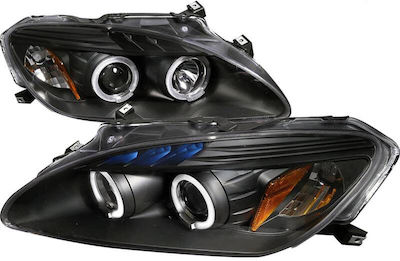Contents
While HID headlights create more visibility and last longer than standard halogen bulbs. Yet, they aren’t designed for every vehicle and can sometimes be challenging to install. Before upgrading your automotive headlights, it’s important to evaluate the options.
What are HID Headlights?

Philips D2S Xenon HID 4200K headlight bulb
HID stands for high-intensity discharge. This type of headlight comes with an HID bulb, which is brighter than most stock headlights.
The HID bulb contains two electrodes within a glass enclosure. Inside this enclosure is xenon gas, which is why HIDs are also called xenon headlights.
The HID beam comes from the combination of the metal salts within the enclosure and the xenon. The beam is activated by the arc from the ballast at 30,000 volts, and it maintains a sustained voltage range between 80 and 100.
Shop now for HID headlight bulbsThere are two types of HID headlights.
- Standard HID headlights. The standard HID light is used in vehicles that need one bulb for the low beams and another for the high beams. This system is known as the single-beam headlight. The single-beam system can use the HID for the low, high, or fog lights. The other bulb used will be halogen.
- Bi-xenon headlights. If the vehicle has a dual-beam system, it’s compatible with bi-xenon headlights. This system uses one bulb to create low and high beams.
Some assemblies rely on shields that switch back and forth between the low and high settings. Other types use reflectors. These cost more than standard HID bulbs because of the complicated design.
HID vs. Halogen Headlights

Philips CrystalVision platinum H11 halogen headlight bulb
Halogen bulbs are commonly used by auto manufacturers. In a halogen bulb, the filament in the enclosure is electrified by heat. This is its biggest downside.
The halogen gas within the enclosure is designed to protect the bulb from heat, but this design doesn’t create a long-lasting light. For that reason, halogen bulbs must be replaced more frequently than any other type.
Shop now for halogen headlight bulbsBecause of the xenon gas in HID headlights, there’s no need for a fragile filament. The HID bulbs last far longer and produce a brighter light.
What Are the Benefits of HID Headlights?
Why would you consider upgrading to HID headlights? There are many benefits to this more advanced design. Consider these advantages.
- Efficiency: HID headlights produce more light than halogen bulbs but consume less energy.
- Durability: Because the HID light doesn’t contain a filament, it doesn’t break as easily as halogen bulbs. Most HID bulbs can last 5,000 hours or more.
- Increased visibility: With the brighter light, you can see more clearly at night. They also help you see further and make your vehicle more visible to oncoming traffic.
- Accessibility: Halogen bulbs all tend to look the same, but HID headlights offer a brighter beam in a variety of color hues, giving you more options.
- Better appearance: HID headlights produce a cleaner light beam. It projects farther and stands out on the road.
- Higher resale value: If you want to sell your car, you may be able to get a little more money simply by upgrading the bulbs to HID.
- Easy installation: If there’s a kit available for your car, it won’t be difficult to upgrade from halogen to HID bulbs.
What Are the Downsides of HID Headlights?

OEM Honda S2000 HID headlight assembly
Despite all of the advantages, there are some downsides to choosing HID headlights. Here are a few to consider.
- Cost: HID bulbs cost more than halogen, yet they are typically less expensive than LEDs.
- Start delay: Illumination can be delayed when first starting the car. The gas needs to energize before reaching total brightness capacity.
- Overheating: If you purchase HID systems that are 55 watts or higher, they can melt the housing. Overheating can also lead to a shorter bulb life.
- Legality: Unless the HID headlights are stock from the manufacturer, they probably aren’t street-legal. Many aftermarket companies claim to be legal but don’t have DOT certification.
Brief History of HID Headlights
The first vehicle headlights were introduced in the 1880s. These headlights were made with acetylene and oil, making for a costly construction. Before the 20th century, electric lights were introduced. Up until 1924, these headlights had to be turned on from outside the vehicle, which probably wasn’t fun in the rain.

Previously owned 2001 BMW 7-Series OEM HID left headlight assembly
In 1962, European manufacturers created the first halogen headlight (H1). It didn’t take long for this design to be mandated by most governments, but it didn’t gain immediate approval from the Department of Transportation (DOT) in the United States.
Surprisingly, xenon lights were created before halogen lights but weren’t initially used for cars. Instead, this design was implemented in the 1950s by a German company, Osram, for the movie industry.
The first car to implement HID headlights was the 1991 BMW 7 Series. Today, they are standard on many luxury automobiles and have been chosen as an upgrade for everyday motorists around the world.
How to Upgrade to HID Headlights
If you’ve evaluated the different types of headlights and have chosen to use HID, here are a couple of steps to take.
Choose the Right Headlights

Aftermarket Honda S2000 headlight assemblies with halo DRLs
You can’t simply pick a set of HID headlights and choose to use them. Instead, you must consider a few different factors, including:
- Vehicle headlight system: You need to figure out if your car has a single- or dual-beam headlight system. The single beam cannot be upgraded to bi-xenon bulbs.
- Lumens: The brightness of a bulb is determined by lumens. The higher the number, the brighter the bulbs.
- Wattage: For maximum efficiency, you want a set of low-watt HID headlights. You can go with a higher set, but you must be mindful of overheating.
- Ballasts: HID kits come with either an AC or DC ballast. The DC ballast produces additional energy but will also drain the battery more quickly. You can also expect more heat from these, causing a shorter bulb life. The AC ballast is cheaper and consumes less power but has a duller beam.
- Color: You can pick a variety of colors for your HID lights, from yellow to indigo blue.
- Ease of installation: If you plan to install the HID headlights, it’s best to have a kit that offers plug-and-play. Or, you can choose a more complicated kit and opt for professional installation. But consider how much you will spend on the labor.
- Price: This shouldn’t be your main consideration, but shopping around and looking for a good deal is okay.
- Legality: It’s important to check your state’s headlight laws before upgrading. Certain colors may be banned, or you may have to stick to a particular brightness level to ensure the car is street-legal.
Install HID Headlights
Once you know which headlights you will use, it’s time to install them. Keep in mind that these steps are provided for reference only. You should always abide by the instructions for your vehicle and the headlights you’ve chosen.
- Take out the old bulbs. Unplug the bulbs and possibly remove other parts to reach the assembly.
- Put the new HID bulbs in the housing or replace the entire assembly. Don’t touch the glass or you can damage it with the oils on your hands. If you do accidentally touch it, clean it off with rubbing alcohol.
- Connect the bulbs to the ballast.
- Test the lights.
If you have trouble installing the new lights or you aren’t sure what’s best for your vehicle, reach out to a professional for guidance.
Shop now for HID headlight assemblies




